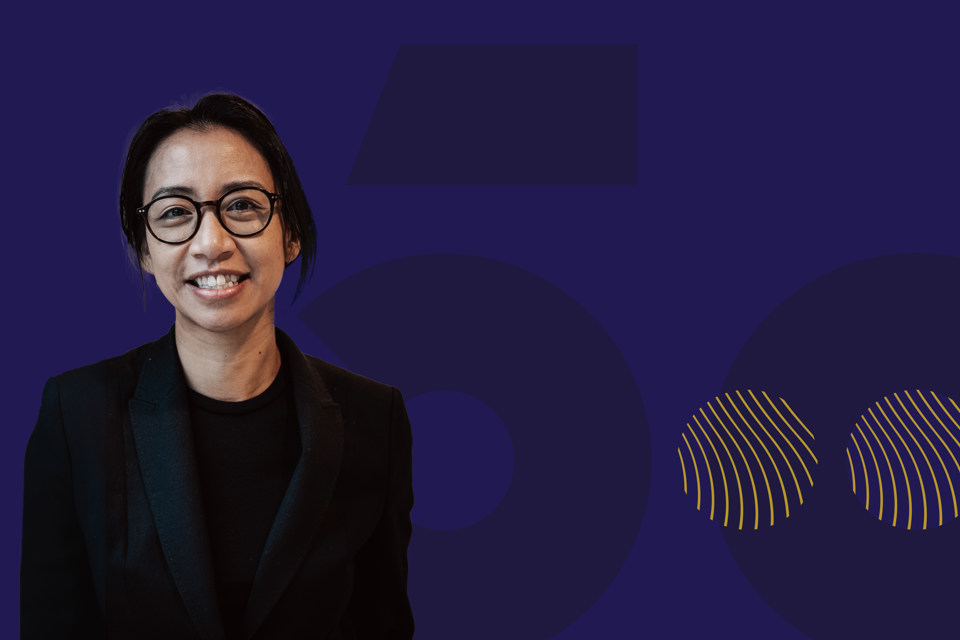By Lea Laursen Pasgaard, AAU Communication and Public Affairs. Translated by LeeAnn Iovanni, AAU Communication and Public Affairs.
Photo: Frederik Kiersgaard Lund Graphics: Søren Emil Søe Degn
The feeling of meaningfulness. This has always been what drives Linda Nhu Laursen in her work. When she completed her MSc in Engineering in Industrial Design she went on to be an entrepreneur in a company she founded with a fellow student. As a design consultant, she lived out her dream of designing products for exciting companies. But the way she used her profession began to feel wrong.
The design profession lost meaning
She experienced being really excited about a consumer product when a customer asked her to produce a new coffee table in the mid-price range. The table did not have to have a long life, it just had to inspire sales.
"My mother said that she wanted the table as a Christmas present, and I remember thinking that I simply didn't think she should spend her money on it. My heart ached that the design profession – which I think is so fantastic, beautiful, and holds enormous potential to shape people's behaviour – was also used for something that is so meaningless," explains Linda Nhu Laursen.
So when the opportunity to do a PhD at AAU's Centre for Industrial Production, she accepted. She wanted to pursue a new path and change the status quo. In 2017, Linda Nhu Laursen submitted her PhD that was done in collaboration with Unilever, LEGO, Novozymes and Heineken. It was about how companies can open up their innovation and design processes and invite external parties in. Knowledge she uses today to bring together actors from all over Denmark around her mission. Subsequently, she was offered jobs at both Unilever and LEGO, but she chose instead to pursue a career in academia.
Today, she is an associate professor in a promotion programme at the Department of Architecture, Design and Media Technology. She is also head of research at AAU Design Lab and an active voice in the public debate on sustainable design. [LP1] She is one of the researchers interviewed by AAU Update on the occasion of the university's anniversary – about her path into research, her relationship with AAU and her wishes for the university's future.
Shaping the designers of the future
Linda Nhu Laursen chose academia because it is where she feels she can make the biggest difference to her field – and the world around her in a broad sense.
"At the university, we don't shape furniture, but the designers of the future. We do the research that makes people think. As head of research, the job is to build the knowledge that the next generation needs. My research agenda has meant, among other things, that today we teach our students that we must abandon the throw-away culture. Instead, I use my research to teach how to design for a long lifespan, to design for residual materials, for repair and for recycling," explains Linda Nhu Laursen.
At the same time, she sees her research projects as an opportunity to make a difference for design and production companies. She invites companies to take part in field experiments where they can test innovative ideas and low-risk initiatives. Initiatives that would never have seen the light of day without research projects, but that provide Danish companies with knowledge, a competence boost and a particularly competitive advantage.
"I get to point the direction, set an agenda. Our research must help companies, contribute knowledge and help equip them for the future. We build the knowledge base for and with Danish companies. That's one of the things I think is completely unique about AAU," she says.
"At AAU, we work closely with industry and our students. We work in problem-oriented and mission-oriented way. That's how I work myself," she adds.
This is clearly seen in the type of research projects that Linda Nhu Laursen conducts. In the Zero Waste research project, she and her team are collaborating with 500 companies to reduce waste in production. And with the Repair Camp initiative, she and the other staff members in AAU Design Lab teach school students to repair their belongings – rather than throwing them away. All research projects that thread through her teaching.
[LP1]Jeg har slettet denne tilføjelse, da du har tilføjet mere eller mindre det samme i citatet nedenfor (med gult), og det bliver for gentagende og tungt at nævne to gange lige efter hinanden.

